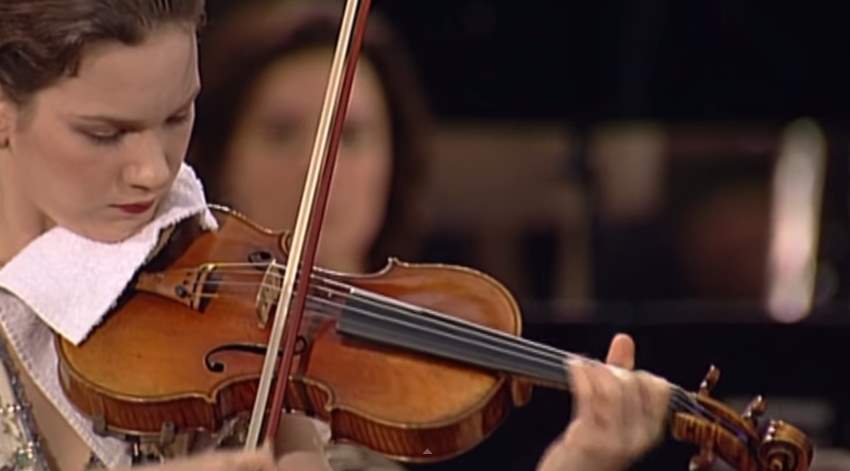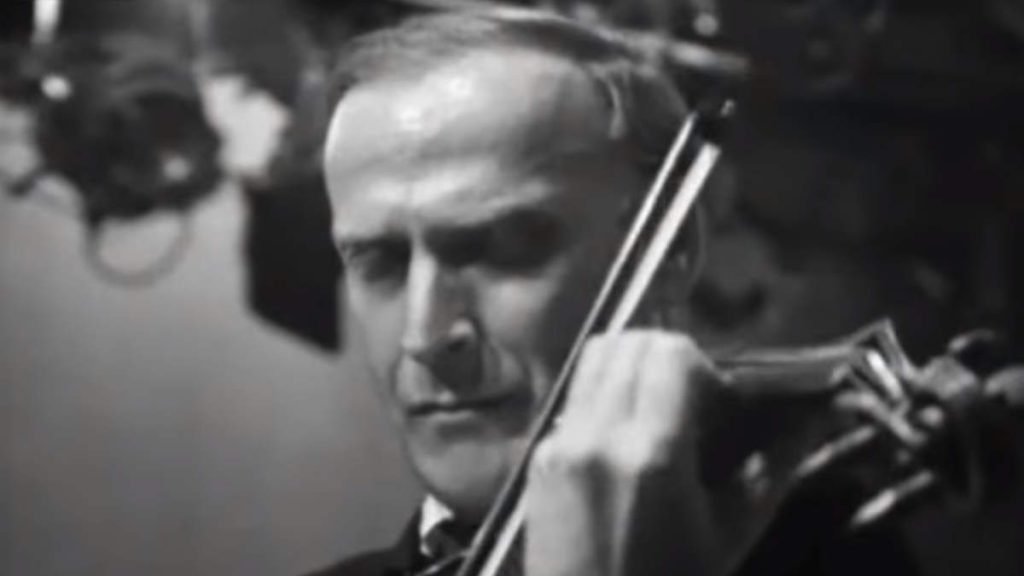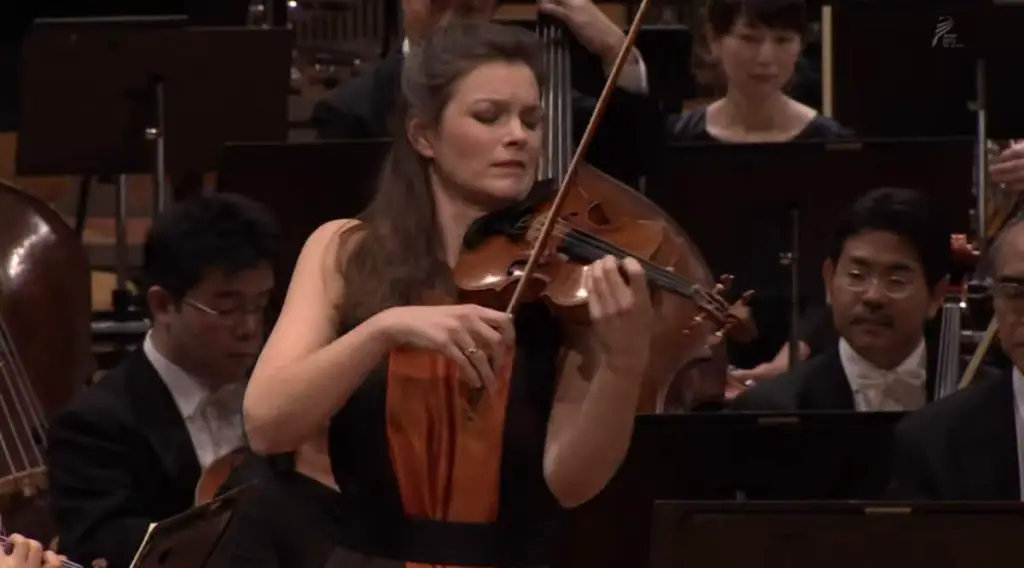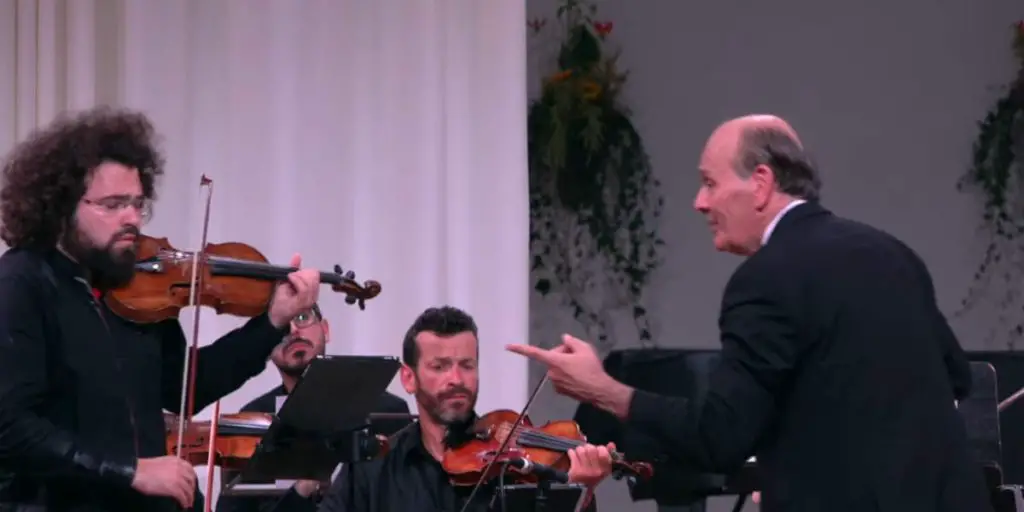Accompanied by the Stuttgart Radio Symphony Orchestra, the American violinist Hilary Hahn performs Wolfgang Amadeus Mozart’s Violin Concerto No. 3 in G major, K. 216. Conductor: Gustavo Dudamel.
Mozart’s Violin Concerto No. 3
Mozart’s Violin Concerto No. 3 in G major, K. 216, composed in 1775 when he was just nineteen, is one of his most beloved works for the violin. This concerto showcases Mozart’s remarkable ability to blend elegance, warmth, and technical brilliance, reflecting both the grace of the Classical period and his own virtuosic touch. Written in Salzburg during a particularly creative period, the Violin Concerto No. 3 is thought to have been composed for Mozart’s own use as a violinist or for his colleague Antonio Brunetti, the concertmaster of the Salzburg court orchestra.
The concerto’s structure is sophisticated yet lively, demonstrating Mozart’s playful interaction between the soloist and the orchestra. He treats the violin not merely as a technical showcase but as an expressive voice that engages in dialogue with the ensemble. Throughout the piece, Mozart combines intricate passagework with lyrical melodies, making full use of the violin’s range and tonal qualities. The solo violin line contrasts with and complements the orchestral accompaniment, with Mozart achieving a balance between virtuosic display and melodic beauty.
This concerto is especially notable for its depth of emotion and melodic creativity, traits that highlight Mozart’s ability to convey both joy and introspection within a single piece. Violin Concerto No. 3 has become a staple of the violin repertoire and is cherished for its delicate charm, lightheartedness, and the glimpses it offers into Mozart’s maturing style as he refined his voice as a composer of instrumental music.
Movements
With the starting times in the video:
1. Allegro (00:00)
The first movement of Mozart’s Violin Concerto No. 3, Allegro is in sonata form, opening with a G major theme, played by the orchestra. The main theme is a bright and happy discussion between the solo violin and the accompaniment, followed by modulation to the dominant D major, then its parallel key D minor. It experiments in other keys but does not settle and eventually heads back to the tonic, G major, in the recapitulation with the help of the cadenza.
2. Adagio (10:35)
The second movement of Mozart’s Violin Concerto No. 3, Adagio is also in ternary form, and in the dominant key of D major. The orchestra begins by playing the well-known and beautiful main theme, which the violin imitates one octave higher. The winds then play a dance-like motif in A major, which the violin concludes on its own.
After a conclusion in A, the violin plays the main theme again, remaining in the same key. When it should have sounded A natural, it sounds A sharp, and the melody switches to B minor, in a fairly tragic passage.
It soon modulates back to A major, and to the home key of D major through the main theme. After the cadenza, and in a quite unusual thing for Mozart to do, the violin plays the main theme again, thus concluding the movement in D.
3. Rondeau. Allegro (21:00)
The third movement of Mozart’s Violin Concerto No. 3 is a Rondeau Allegro, and opens with an orchestra theme which gave the concerto its nickname: “Straßburg”. After a lonely, short passage by the oboes only, the solo violin enters with a different melody which modulates to D.
A brilliant and high passage in D is soon followed by a descending arpeggio-like melodic line which eventually leads to the G string and repeats itself. After the second time, the violin plays the lonely oboe line from the introduction. A chromatic scale then leads to the “Straßburg” theme with the violin playing.
The orchestra imitates the violin and abruptly changes to B minor and a B minor violin theme: exactly the same theme as in the first violin solo played in the relative minor key. As the theme itself repeats, it once again abruptly changes to E minor. The small E minor cadenza introduces the orchestra, which once again plays the “Straßburg” theme in G major.
After a couple of bars in D major by the orchestra, the music goes from Allegro to an Andante in G minor, almost in the fashion of a scherzo-trio form. The strings play saltando quavers while the violin plays a note-rest small melodic line that repeats itself and eventually leads to a G major Allegretto.
The violin plays a crotchet-only playful theme, while the orchestra plays brilliant and fast threesome up-and-down notes, in a way that the solo violin’s part acts as a background only. The parts switch and now the orchestra plays the playful theme, while the violin gets to show off by playing fast notes. The quick passages stop for the violin to play a more ceremonial theme played on the D and A strings, in the fashion of a Musette.
This pattern sounds two more times until the violin concludes the fast theme with a low G and switches to Tempo 1. After a few bars, the first solo theme is that the violin is played as a variation in A minor. The violin plays the “Straßburg” theme in G minor, and the orchestra imitates it in the usual form of G major.
After the typical first solo variation, this time in the tonic key. The violin plays another small cadenza which leads to the last “Straßburg” theme played in two octaves. The orchestra plays it one-third time in the lower octave. Instead of ending the concerto in a pompous way, Mozart chose to end it instead with the lonely oboe theme in G major played piano, adding the feeling of a musical “disappearing”.
Hilary Hahn
Hilary Hahn, born November 27, 1979, is an acclaimed American violinist known for her technical mastery, emotive playing, and dedication to contemporary classical music. A three-time Grammy Award winner, Hahn has performed with leading orchestras worldwide, establishing herself as one of the foremost violinists of her generation. Raised in Baltimore, Hahn began violin lessons shortly before her fourth birthday, eventually studying at Philadelphia’s Curtis Institute of Music with Jascha Brodsky, a pupil of Eugène Ysaÿe. By sixteen, she had completed her degree requirements but stayed at Curtis for additional studies, earning a Bachelor of Music in 1999.
Hahn’s early career was marked by prestigious debuts, including performances with the Baltimore Symphony Orchestra at twelve and the Philadelphia Orchestra at Carnegie Hall. She made her international debut in 1994 with the Budapest Festival Orchestra and gained recognition in Germany in 1995 with Lorin Maazel. Since then, she has performed extensively, from the New York Philharmonic to the Royal Concertgebouw, and in 2007, played at the Vatican under Gustavo Dudamel. Hahn’s recordings on the Deutsche Grammophon and Sony labels feature a blend of traditional and contemporary repertoire, combining works like Beethoven with Bernstein and Tchaikovsky with Jennifer Higdon.

A champion of new music, Hahn has commissioned pieces from numerous contemporary composers. Her In 27 Pieces: The Hilary Hahn Encores, featuring short works from composers like Nico Muhly and Max Richter, won a Grammy for Best Chamber Music/Small Ensemble Performance. She also commissioned works like Edgar Meyer’s violin concerto, Jennifer Higdon’s Pulitzer-winning concerto, and Fractured Dreams, a violin-piano sonata by Lera Auerbach. Hahn’s cross-genre collaborations further showcase her versatility, including improvised music with Hauschka and performances with singer-songwriters Josh Ritter and Tom Brosseau.
Hahn’s film work includes solos for The Village (2004) and The Deep Blue Sea (2011). Dedicated to the music of Bach, she considers his compositions a “touchstone,” playing his works daily since childhood. Hahn performs on an 1864 Jean-Baptiste Vuillaume violin and has added a second Vuillaume to her collection for recent performances. Her contributions to both classical and contemporary music continue to solidify her reputation as an artist who bridges tradition and innovation.
Sources
- Violin Concerto No. 3 (Mozart) on Wikipedia
- Hilary Hahn on Wikipedia
- Violin Concerto No. 3 in G major, K.216 (Mozart, Wolfgang Amadeus) on the International Music Score Library Project website
- Is the Mozart Violin Concerto No. 3 difficult? on the Violinist.com website


